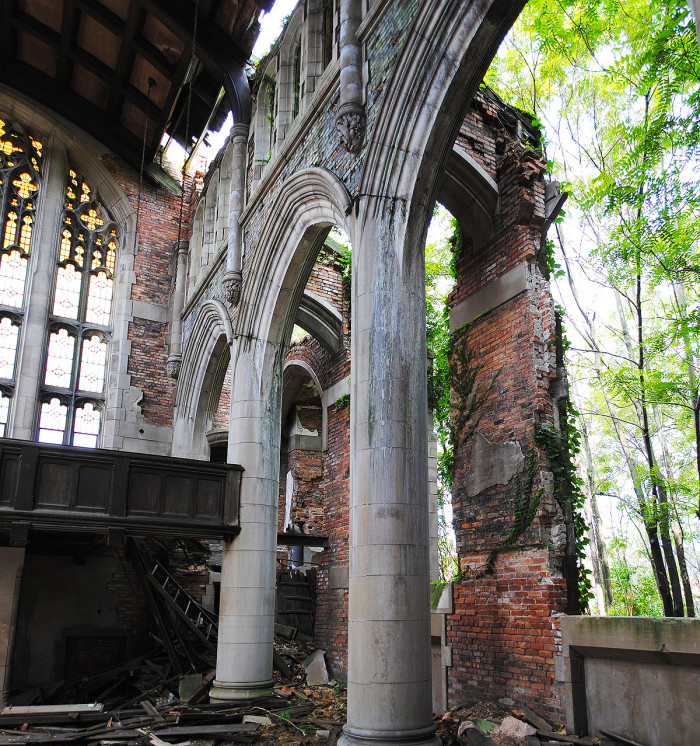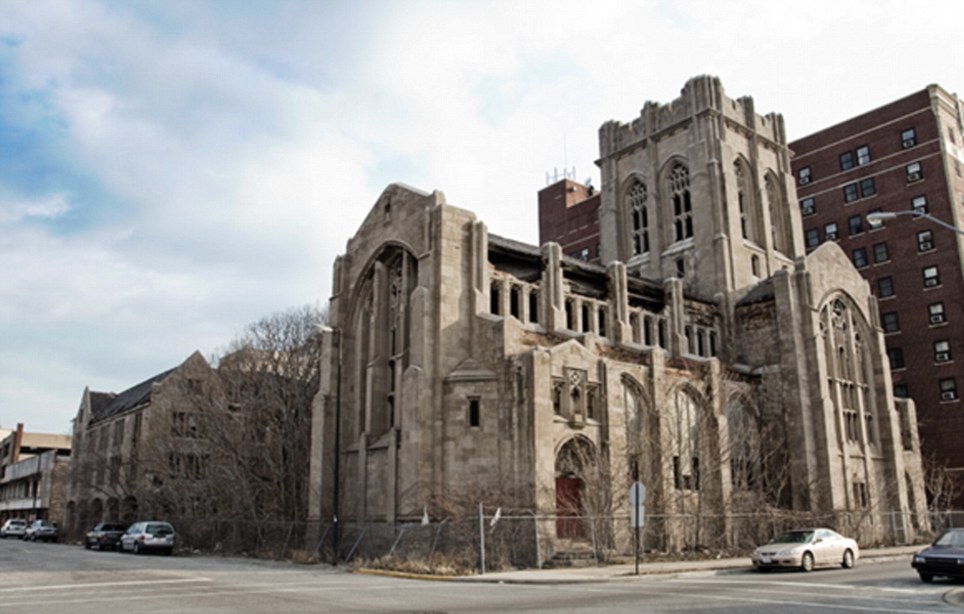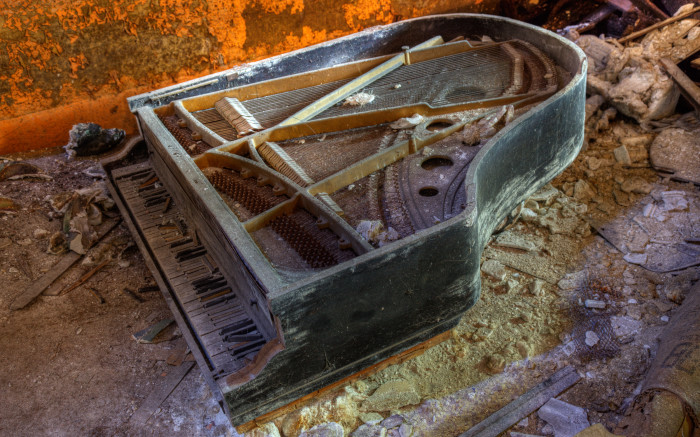June 29, 2016
David Owen
The ruins of Gary, Indiana: On par with the more well known Detroit ruins
Once the center of the country’s booming steel industry and known as the City of the Century, Gary, Indiana now lies in ruins as a sad example of American industrial decline.
Founded in 1906 by the US Steel Corporation, Gary’s heyday was in the post-war boom of the 1950s when almost 200,000 people lived and worked in the bustling city, 25 miles from Chicago.
As the American manufacturing sector contracted, Gary’s population fell by over 50 percent and no one now uses the once bustling train stations, churches and auditoriums that are now decaying as they are left to the elements.
The decay has been captured by photographer David Tribby in stunning photos.
Frequently rated one of the ten most dangerous cities in the United States, Gary once boomed with jobs and opportunities but now faces the acute difficulties of America’s growing rust belt, with 22 percent of families in the once-great city now lying below the poverty line.
This modern American ghost town began life as home for workers at the United States Steel Corporation plant until economic competition from abroad forced a 90 percent job cut.
Thirty-thousand jobs were gone in a flash and the flight of people away from Gary led to whole swathes of buildings being abandoned such as the once proud City Methodist Church which was built in the 1920s.
U.S. Steel paid $385,000 towards the $1 million construction costs of the church, which used to hold 950 people every Sunday and boasted a total congregation of 3,000.
The church also had a large school, gymnasium and an auditorium named the Seaman Hall where the city would hold community meetings, plays and musical events.
By 1970 the number of attendees for Sunday mass had fallen to 100 and in 1975 the church closed for good and began its long decent into despair.
Lying dormant and unused since then, many plans have been mooted to restore the place of worship including turning the vast empty spaces into a centre for performing arts or even to gracefully culture the ruins into an open garden.
However, with no funds and no concrete interest, the City of Gary has allowed the crumbling building to become a symbol of the decline of northwest Indiana and American industry.
Other building’s such as the city’s Union Station are potent reminders of the heights that Gary has fallen from.
Constructed to feed the growing city in 1910, the station lasted only another five decades before being closed and left to nature to take its course.
In fact, in 2008, the station was used as an example of what would happen to a Chicago building if no people were around to tend to its upkeep in the series ‘Life After People’.
The 10,000 Gilroy Stadium on the western edge of Gleason Park in Gary, Indiana has laid in ruins since 1976, only 20 years after it opened.
With no one around the watch the football games in the city, the stadium was shut, but not before it had hosted Gary’s most famous son’s, the Jackson Five for a 1969 concert.
Ever since the 1990’s succesive mayor’s of Gary have pledged to revitalise the city, but to date nothing has been realised.
Former Congresswoman Cynthia McKinney said in an interview about the city, that ‘This kind of situation is happening all across our country.’
The United States is becoming a shell of itself and at the same time, it’s the decision makers in Washington D.C. have chosen to finance war, after war and after war while we decay here at home.’

Union Station, Gary, Indiana, which was opened in 1910 and built to serve the Lake Shore and Michigan Southern Railway and Baltimore & Ohio Railroad. The station lies empty now, having been abandoned in the late 1950’s as the city began to fall into disrepair

The old Gary, Indiana Union Station near 4th and Broadway sits abandon after decades of weathering.

City Methodist Church in Gary, Indiana

City Methodist Church in Gary, Indiana

Covered in gleaming snow, City Methodist Church Gary, Indiana was built in the 1920’s to hold a congregation of 950, complete with choir and one of the largest church organ’s in the state

Partly paid for with money donated by U.S. Steel, the church also held a school, a gymnasium and an auditorium – Seaman Hall – named for the pastor who helped raise the $1 million to pay for the construction

The church once boasted a membership of 3,000, but by 1970, Sunday attendance had crashed down to about 100

In 1975, the church closed its doors for good and City Methodist Church began its long decent into disrepair. It has been mooted that what’s left of the building could be turned into a European-style ruins garden, but no plans have yet been accepted

Former Glories: The Seaman Hall at the City Methodist Church was used for musical and dramatic shows, community events and musicals put on for the population

Gary, Indiana was founded in 1906 by the United States Steel Corporation as the home for its new plant and the town at one point had almost 200,000 people who needed entertainment during their personal time

The Palace Theater in Gary, Indiana

The Palace Theater in Gary, Indiana

The Palace Theater in Gary, Indiana

The Palace Theater in Gary was one of the focal points of the local community during the city’s heyday in the early part of last century

From the time it opened, The Palace Theater was one of the grandest venues in Gary, but when the US Steel plant in Gary shed people, so did the rest of the town. The theater eventually shut down in 1972

This downtown Post Office designed by architect Howard Lovewell Cheney and built in 1936 as a part of the New Deal Program.

An old door in an abandoned post office in Gary, Indiana.

The interior of the U.S. Post Office building in Gary, Indiana reveals what happens when nature is left to attack buildings built by man

Gilroy Stadium: It hosted Gary’s most famous sons, the Jackson Five for a 1969 concert

The Gary Public Schools Memorial Auditorium, on Seventh and Massachusetts is listed in the National Register of Historic Place

Gary Public Schools Memorial Auditorium: Built in 1927 and made of brick, terra cotta and limestone, the Memorial Auditorium could seat 5,000 people
related article and more pictures: http://www.onlyinyourstate.com/indiana/abandoned-ruins-gary-in/